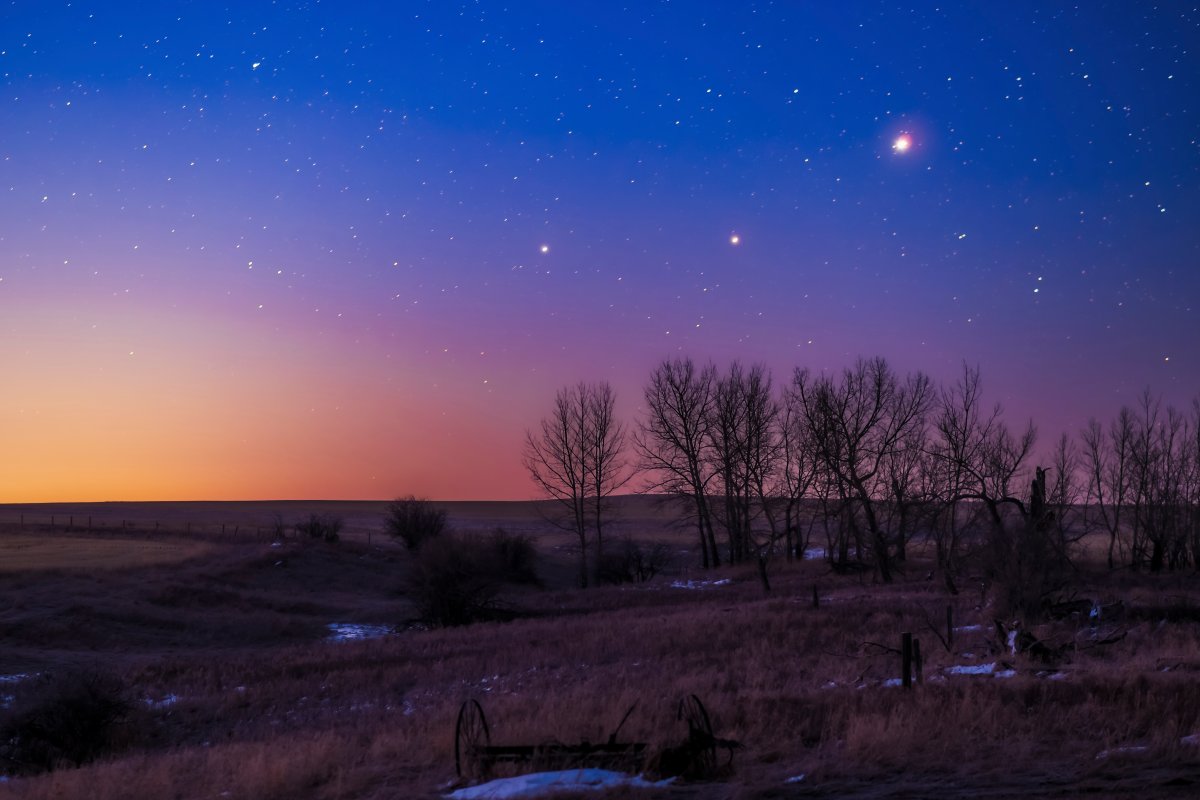For the second time in as many months, if you look up to the skies at night, you will be able to see a unique occurrence.

Last month, Ontarians were treated to a super flower blood moon lunar eclipse, and in June we will get to see a celestial cavalcade, according to University of Guelph researcher Orbax Thomas.
“Between June 19 and June 27, in the early morning, probably about an hour before sunrise, you’re going to get an opportunity to see a planetary lineup,” he explained.
“So, you’re going to have Mercury, Venus, Mars, Jupiter and Saturn — the five visible planets — all going to be in a straight line in the sky in order of the distance of their orbits from the sun.”
The five planets are visible without aid but viewers could have a special treat with some assistance.
“If you do have a pair of binoculars or a or a small telescope you might also get the trait of being able to see Uranus and Neptune in that line up as well,” Thomas told Global News.

Those who wish to check out the celestial lineup will need to wake up early.

Get daily National news
“It’s a bit of a small window of about 30 to 90 minutes anywhere in there before sunrise,” Thomas said.
“Because as the sun comes up in the morning, you’ll start to have the sunlight eclipsing or the sunlight will be obscuring the light from those different planets.
“Go get yourself a coffee, come back home, start your day early.”
Those who choose to get up before the rooster’s crow on Thursday to watch the skies will be in for an extra special treat.
“The waning crescent moon actually joins this celestial cavalcade as well. So you’ll actually be able to see the moon in that same lineup,” he said.
Much like other celestial events, the weather and atmosphere will play a part in what you get to see.
“So if you’re just relying on your eye to see this stuff, cloud cover in the morning can be an issue,” Thomas said.
“And your biggest problem is always going to be some sort of light pollution. These are fairly low on the horizon, these planets. So the clearer and darker patch of sky you can find is always the better.”
In case you sleep for the next few days or the weather doesn’t cooperate, you do have the option of checking it out next time but you will be waiting a while.
“Last time it happened was 2004, and the next time it happens will be 2040,” Thomas said.
- What’s the story behind this mysterious photo album dropped at Global Edmonton?
- Want to claim charitable donations on tax returns? Ottawa to extend deadline
- Canada Post strike left 215K passports in limbo – and more delays could come
- Plane with ‘suspected landing gear issue’ moved after rough Halifax landing








Comments